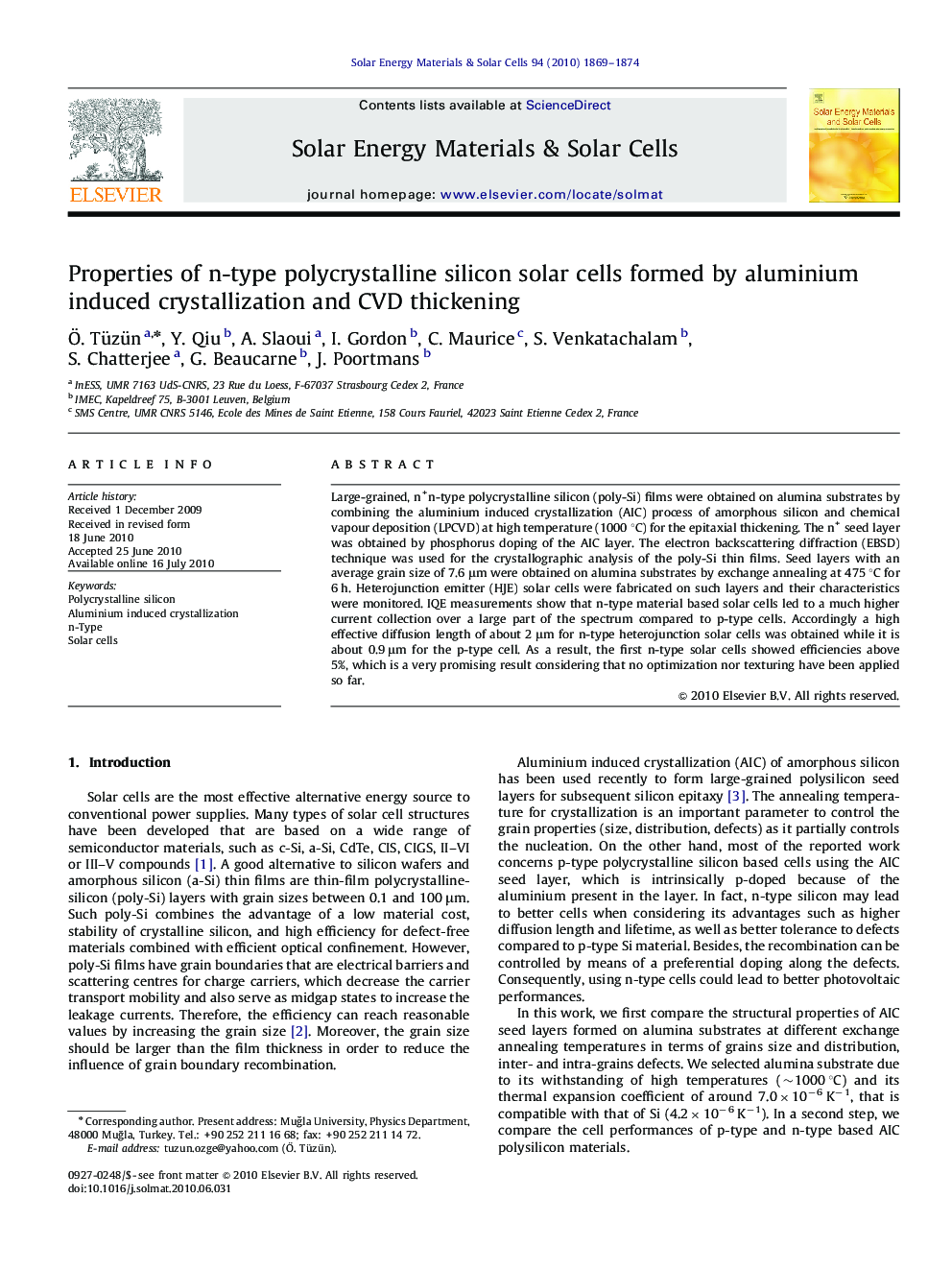| Article ID | Journal | Published Year | Pages | File Type |
|---|---|---|---|---|
| 79397 | Solar Energy Materials and Solar Cells | 2010 | 6 Pages |
Large-grained, n+n-type polycrystalline silicon (poly-Si) films were obtained on alumina substrates by combining the aluminium induced crystallization (AIC) process of amorphous silicon and chemical vapour deposition (LPCVD) at high temperature (1000 °C) for the epitaxial thickening. The n+ seed layer was obtained by phosphorus doping of the AIC layer. The electron backscattering diffraction (EBSD) technique was used for the crystallographic analysis of the poly-Si thin films. Seed layers with an average grain size of 7.6 μm were obtained on alumina substrates by exchange annealing at 475 °C for 6 h. Heterojunction emitter (HJE) solar cells were fabricated on such layers and their characteristics were monitored. IQE measurements show that n-type material based solar cells led to a much higher current collection over a large part of the spectrum compared to p-type cells. Accordingly a high effective diffusion length of about 2 μm for n-type heterojunction solar cells was obtained while it is about 0.9 μm for the p-type cell. As a result, the first n-type solar cells showed efficiencies above 5%, which is a very promising result considering that no optimization nor texturing have been applied so far.
